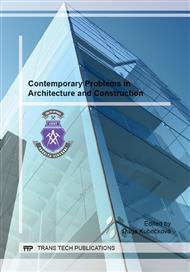p.803
p.807
p.811
p.817
p.823
p.827
p.834
p.839
p.844
Experimental Design of Surface Modification of Expanded Obsidian and Determination of Water Sorption Capacity
Abstract:
The aim of this paper is to study the possibility of expanded obsidian and its modified product use for oil sorption, in that tetraethoxisilane (TEOS) has been used as a modifier. The optimal concentration of the modifier was determined by 50 per cent weight of expanded obsidian. The expanded obsidian was previously activated with 0,1 M solution of hydrochloric acid. IR spectrometry was used to characterise structural changes in the modified expanded obsidian samples. To determine water sorption capacity a series of experiments has been carried out. The analysis of obtained experimental data showed that after surface modification of expanded obsidian water capacity is reduced 3 times after the surface modification of EO.
Info:
Periodical:
Pages:
823-826
Citation:
Online since:
October 2014
Authors:
Keywords:
Price:
Сopyright:
© 2014 Trans Tech Publications Ltd. All Rights Reserved
Share:
Citation:


